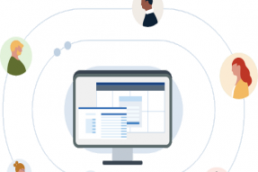LinkedIn networking is changing over the years. If you’ve been browsing LinkedIn for perfect consumers for your lead generation efforts, you’ve come across some profiles with the word LION in the headline. No, these aren’t a bunch of like-minded folks who adore giant cats; they’re LinkedIn Open Networker making use of the LION designation to develop their network far faster than regular users. Is it, however, effective? Is it also a legitimate technique for growing a high-quality network on LinkedIn?
LinkedIn is the internet’s largest professional network. LinkedIn can help you locate the ideal job or internship, establish and deepen professional relationships, and learn the skills you need to advance your career.
Open LinkedIn networking implies that you are willing to accept connection requests from people you do not know. While your goal as an open networker is to connect with as many people as possible, even strangers, you are only compelled to accept some invites to join. As an open networker, you will never flag a person as someone you don’t know, prompting LinkedIn to penalize them. Below, I discuss the situation of a spammer. Many open networkers use the term LION, which stands for “LinkedIn open networker,” on their LinkedIn profiles and participate in LinkedIn LION groups. I am an open networker and a member of multiple LION groups, but I have opted not to include the term LION in my profile.
Suppose you’ve never heard of LinkedIn Open Networking as a part of LinkedIn networking. In that case, this piece will explain what it is, if it’s worthwhile to become a LION as a B2B organization, and how it can be utilized to increase your lead generation efforts. But before we get into the nitty-gritty of the entire situation, let’s first understand the basics of the guide.
What exactly is a LinkedIn Open networker?
The LinkedIn Open Networker is a member of the professional social LinkedIn networking site that publicly declares that they are open networkers to attract connections from other site members. In other words, they are willing to interact with anyone who gives them an invitation. When you sign up for a LinkedIn account, you are usually assigned to a network based on your region and maybe your school and professional affiliations.
As a result, the number of persons who can become your connection is limited. However, becoming a LinkedIn Open Networker opens the door to rapidly increasing the number of people in your network and boosting your connection base.
In simpler words, a LION stands for LinkedIn Open Networker in the LinkedIn world. Lions are generally open to networking with individuals they have never met before. They can assist you in becoming successful on the site by bridging networks of closed people by identifying a potential link that would have gone unnoticed otherwise in the traditional LinkedIn networking techniques.
How to become a LinkedIn Open Networker LION?
LinkedIn LIONs are self-claimed connected people. To let people know you are a “LION” or “LinkedIn Open Networker,” add the term “LION” or “LinkedIn Open Networker” to your profile heading. Once you’ve promoted yourself as a LION, you should accept every connection request that comes your way and never label someone as SPAM or select “I Don’t Know” when an invitation request comes your way.
If someone sends you a connection request on LinkedIn networking and you genuinely do not want them in your network, archive the request, which will eventually expire without penalty. On LinkedIn, you may search for the terms “LION” or “LinkedIn Open User” as keywords to obtain a list of contacts who are LinkedIn LIONs & great connectors with whom you can rapidly connect to help develop your network. You’ll also be able to connect with other LIONS through LinkedIn groups, of which there are many.
How does LinkedIn Open networking (LION) work?
Because it is not an official LinkedIn feature, there is no specific setting you must select on your LinkedIn profile to become a LION in LinkedIn networking. Instead, users add the word “LION” to the title of their profile. By doing so, you demonstrate to others that you will accept any connection request. Although there is no official rule prohibiting you from blocking connection requests after becoming a LION, there is an unspoken agreement that you will not deny requests.
Having connection requests blocked harms your LinkedIn profile and can get you tagged for spam, so connecting with LIONS is a simple method to avoid this as a part of LinkedIn networking. They do this by accepting (most) connection requests, even if they don’t know the sender or have no common relationships. The benefit of adding a LION to your network is that they are less likely to flag your profile as spam or click “I don’t know this person.”
LinkedIn will almost certainly not punish you. Another advantage is that you have access to their network as well. You will undoubtedly get connection requests from their network when you add a LION. Others with a vast network are frequently used as a bridge to link people who would not otherwise be able to see one other on LinkedIn. LinkedIn networking members, as you may know, can have three degrees of separation:
1st Degree connection – your contacts, those with whom you are personally related
2nd Degree connection – persons with whom you are not directly linked but via whom you are connected; Your connections’ 1st-degree connections
3rd Degree connection- people who are connected to your second-degree relationships.
This explanation should help you understand why you need a LION in your network. You’ll suddenly be able to link with thousands of other people thanks to one LION since they’ll become your 2nd or 3rd-degree connections through them. And if a LION comments on your post, you’re in luck! Their connections will see your post in their feed, and you may receive likes, comments, and requests from other LIONS. LIONS can even help your post go viral!
Some open LinkedIn networking members use the term LION in their profile headlines, making them easier to identify. Some may include it in their bio or the ‘About’ section. However, only some of them have it. Another approach to identifying a LION on LinkedIn is to look at their profile and see how many connections they have. LIONS frequently have up to 20.000 to 30.000 connections.
Should you or should you not become a LinkedIn LION?
LinkedIn networking is one place you find different prospects at. Being a LinkedIn LION, there are both good and bad sides to it. Naturally, everything has a positive and negative impact, and so does this. Before deciding to become one, make sure that you go through these pros and cons of becoming a LION while LinkedIn networking.
Pros of becoming a LION
- The most significant benefit of becoming an open networker is the potential to rapidly expand your network, providing you with more opportunities to enhance lead generation.
- You’ll see an upsurge in connection requests as soon as you advertise yourself as a LION. This increases the visibility of your page and broadens its reach.
- More people will notice your updates and posts as your network grows, which means your interaction will also grow.
- This rapid increase in brand visibility and recognition benefits marketing efforts while building a brand.
- A broader network immediately improves your lead generation efforts because you have far more people to reach out to.
Cons of becoming a LION
- However, you should be aware that all of this comes with hazards. Accepting a connection request from someone you don’t know exposes you to privacy concerns and spam.
- Your new connections will be able to see both the public information on your profile and the information reserved for your connections. And you never know how they will use that information. But don’t worry, because you can choose which information is displayed.
- Note: If you wish to become a Linkedin open networker, we recommend you delete sensitive information from your profile, such as your phone number or address. To make the LinkedIn networking process safer, you may include your university but not your graduation year.
- Unfortunately, you can’t remove your email address from LinkedIn, making you vulnerable to spammers. Some will send you junk mail promoting their offers or add you to mailing lists to which you never subscribed, but others may try to sell your information to third-party companies.
- Filtering every connection request is the most excellent approach to protect yourself from spammers and harassers. Before accepting a connection request, check to see if their profile appears authentic and whether they have a profile photo of themselves.
How to find LIONs in the search?
There are three methods to locate LIONS on LinkedIn. You may either join one of the LION groups or locate them in search results via the LinkedIn sales navigator. Open your search bar and type “lion” to see hundreds of individuals with whom you may connect.
However, if you want to be more deliberate in your LinkedIn networking development, you might conduct an advanced search instead. You must enter the term “lion” followed by a relevant keyword to your industry or job title.
It can be something other than your official title that needs to be added to LinkedIn networking. You might wish to make contact with LIONS from your hometown or university. In such a case, look for “Stanford lion” or something like that.
Remember that the aim is to build a high-quality network; therefore, employ some filters when meeting new individuals. Here’s a tip to help you locate even more LIONS. You may conduct a similar search, but instead of “lion,” use “open networker.”
The two words are nearly identical; it all varies on how each open networker wishes to be addressed. Another option is to search for people in your industry while using membership in one of the LION organizations as a search factor.
Lastly, joining their community is the simplest method to meet LinkedIn LIONs. You can find LIONs to connect with efficiently and quickly in groups and the LION community. LIONTM and Lion500.com are the groups with the most LIONS, where you may meet other networkers. So hurry and join these groups now!

Conclusion:
This was the complete guide for LIONs. We hope you have decided whether you want to become one of such LinkedIn networking or not.
- You can start running your brand new LinkedIn account within Linked’s weekly limits, and this feature will prevent it from getting banned by LinkedIn.
- An auto-warm-up feature will save your new LinkedIn account from LinkedIn’s weekly limits.
- You can even use this feature for a new LinkedIn account and prevent it from getting banned from LinkedIn’s limitations.
Related Posts
2 Comments
Comments are closed.




[…] by /u/linked_camp [link] […]
[…] by /u/linked_camp [link] […]